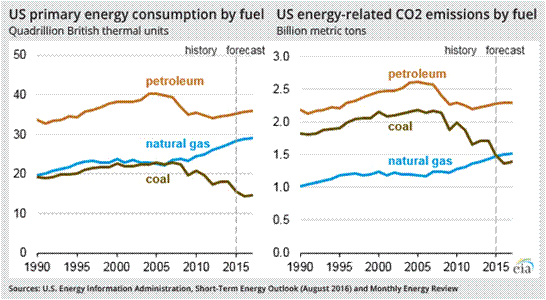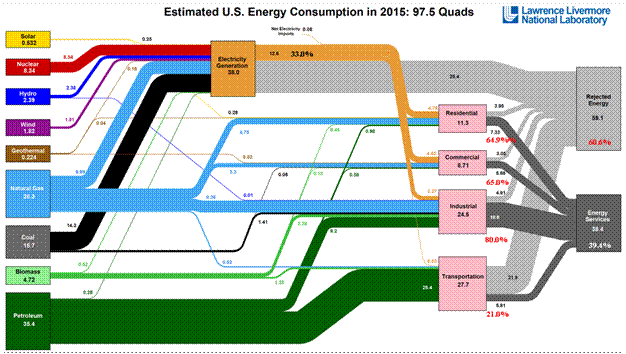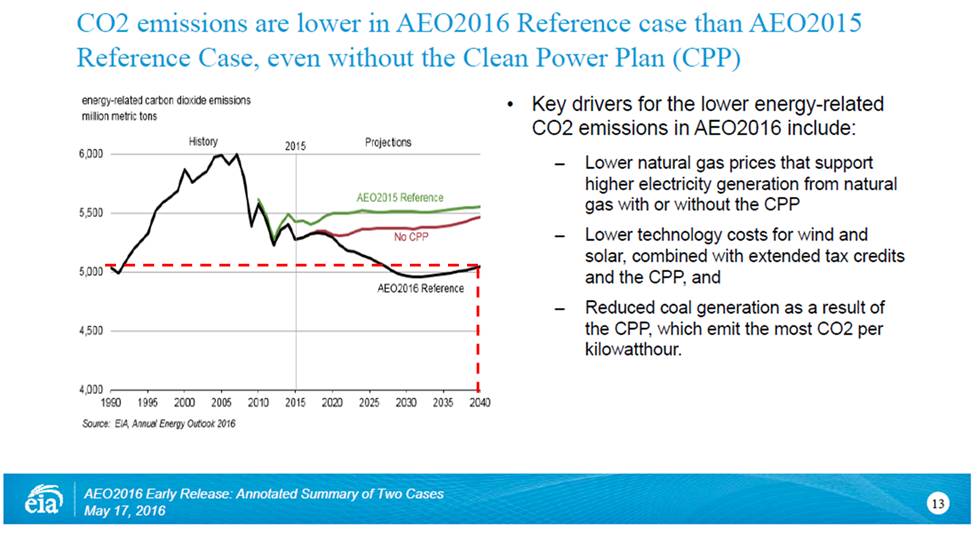The 2017 EIA Annual Energy Outlook - "5°C or 6°C?"
The 2017 Annual Energy Outlook, released in early January, provides a CO2 emissions forecast, which includes a base Reference Case along with side cases that examine the forecast sensitivity to six basic assumptions.
The Reference Case assumes that the U.S. implements the Clean Power Plan (CPP).
The six side case variations are:
- High & Low Economic Growth
- High & Low Oil Price
- High & Low Oil & Gas Resource & Technology
In addition, the EIA has also provided a forecast for the Reference Case that assumes the U.S. does NOT implement the Clean Power Plan.
The report generator provides both a U.S. Electric Power and a U.S. Energy-Related Forecast. The report generator is available through a link on its website (http://www.eia.gov/outlooks/aeo/data/browser/).The report generator does not allow the user to combine the effects of these side cases.
There are eight cases in all. I have found it useful to arrange these case results from the U.S. Energy Related Total, high to low, to get a sense of their relative impact.
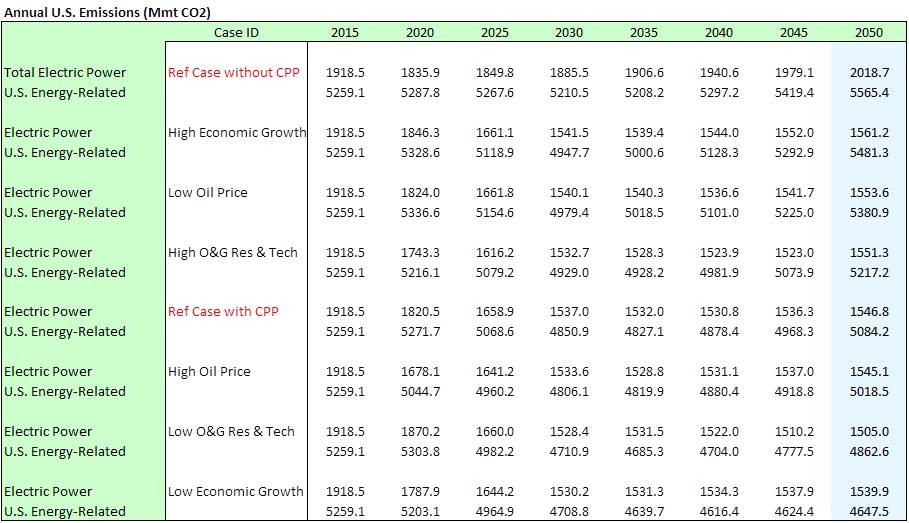
Note, that there is hardly any difference in Electric Power CO2 emissions except in the Reference Case without CPP. All the other cases are in the 1550 Mmt range and there is hardly any impact beyond 2030. This is largely the result of the underlying generation mix assumptions of 70% NGCC without CCS, in combination with 30% renewables, and that the conversion from coal to NGCC is virtually complete by 2030.
The impact of the CPP is shown below, and is in keeping with the approximately 400 Mmt (0.4 Gt) in the AEO2016 edition forecast for 2040.

Given the new direction articulated by the incoming Trump administration, a new “worst case” needs to be defined. The prevailing rhetoric would suggest a scenario as follows:
- No CPP ( x1.305 & 1.095)
- High Economic Growth (x1.009 & 1.078)
- Low Oil Price (x1.004 & 1.058)
- High Oil & Gas Resource & Technology (x1.003 & 1.026)
The values shown are the Electric Power and Energy Related values, respectively, compared to the reference case with CPP.
The combined effects of these in 2050 are x1.327 & x1.282 respectively, again, compared to the Reference Case (with CPP). If these factors are applied in combination, the resulting 2050 U.S. Electric Power Emissions are 2052.4 Mmt, and the Energy-Related Emissions are 6516.3 Mmt (6.5 Gt), effectively the same emissions we have today.
The Worldwide CO2 emissions, based on the AEO2016 are shown in the following table, along with a calculated U.S. percent contribution.I have extrapolated the 2050 U.S. Energy-Related Emissions without CPP to the estimated 11.4% of the total. Should that remain the case, this set of combined assumptions results in a Worldwide Emission total of 57.0 Gt.

The 57.0 Gt puts the world on a 6°C trajectory. I’ll leave you locate this on the Carbon Capture Conundrum plot. Hint…it is 3x the 2°C target and 4x the 1.5°C target.
The U.S. portion of the 6°C, 58 Gt Worldwide emissions in 2050 is 5.4 Gt, vs. the projected 6.5 Gt with combined effects as noted above.
If the same logic were applied to the Reference Case (with CPP), the 5084.2 U.S. Energy-Related CO2 emissions would become 48.8 Gt Worldwide, at approximately 5°C.
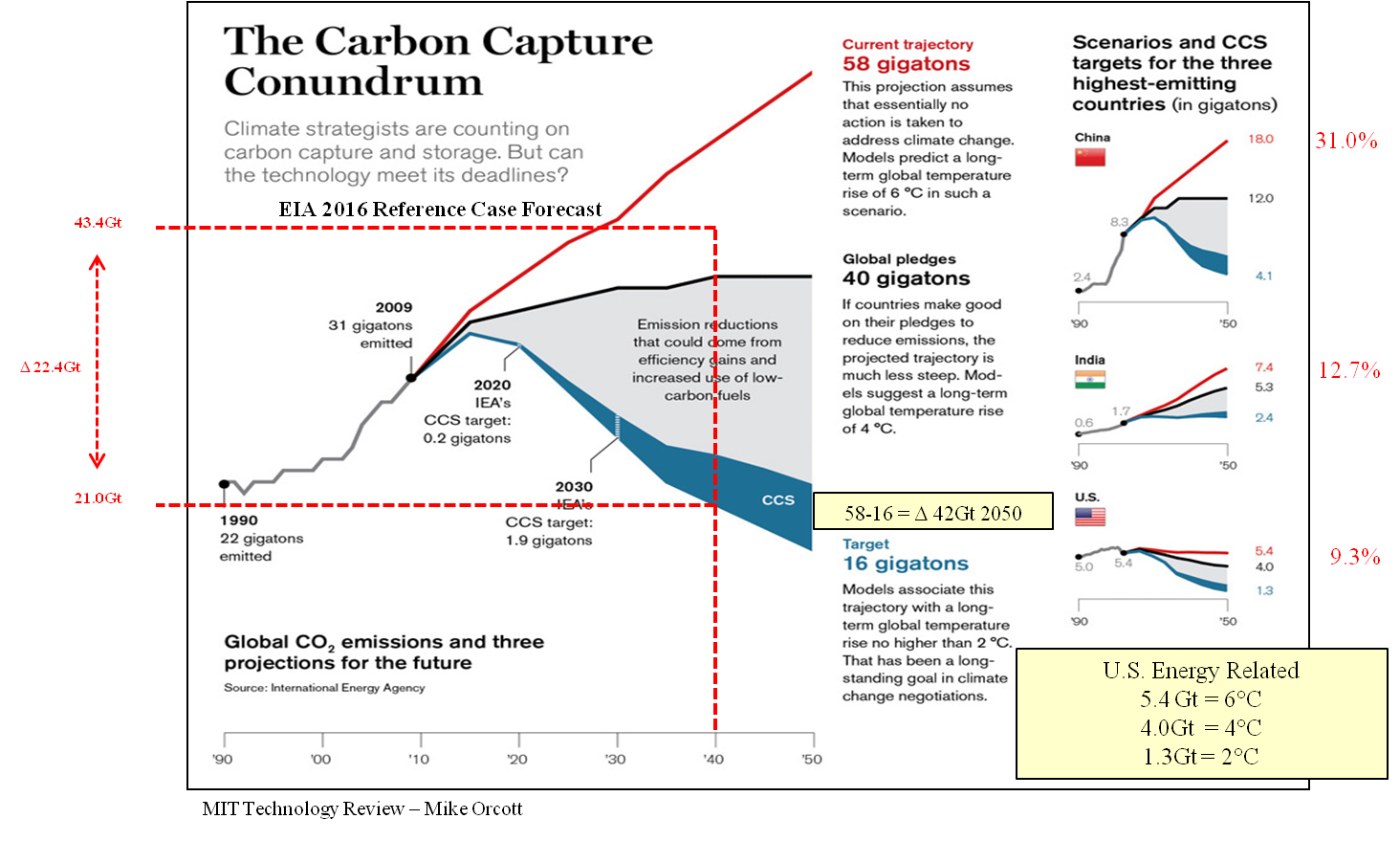
The AEO2017 also offers a metric of mt per Capita, presumably to support the claim that emissions are declining. We have seen this logic attempted before, either as CO2 tonnes/GDP or some other production index. CO2 per Capita is just another surrogate for these output-based measures that allow emissions to grow along with economic output.
The good news is that this output-based logic is similar to those proposed by China and India. The bad news is that we are nowhere close to the level required to reach the 2°C/450ppm goal.



